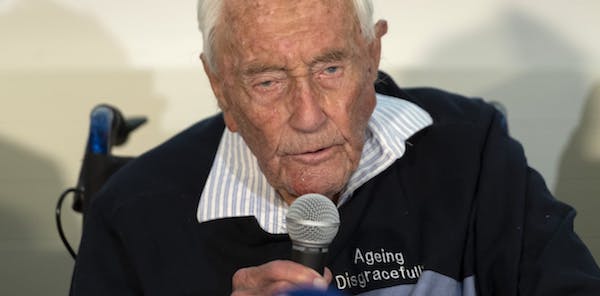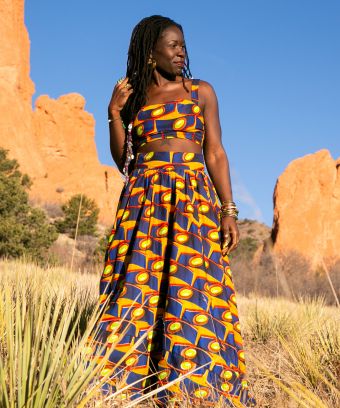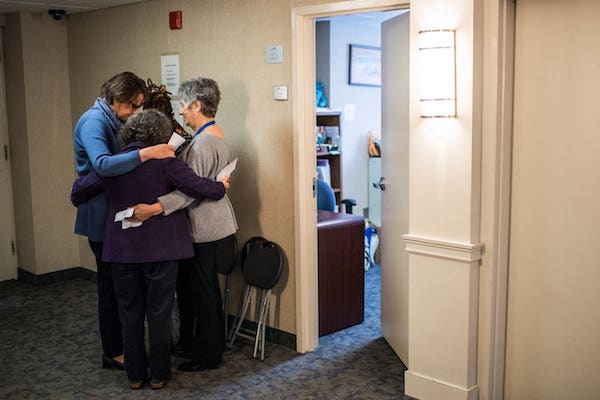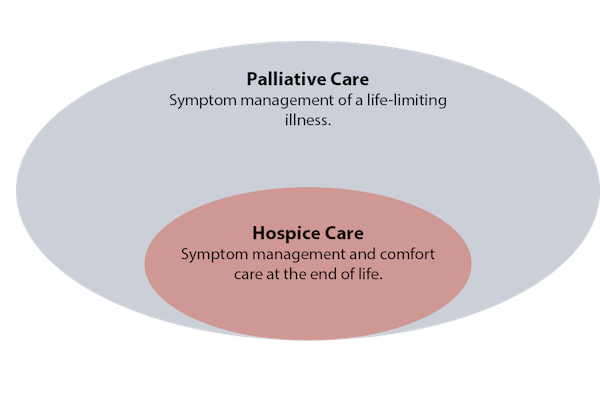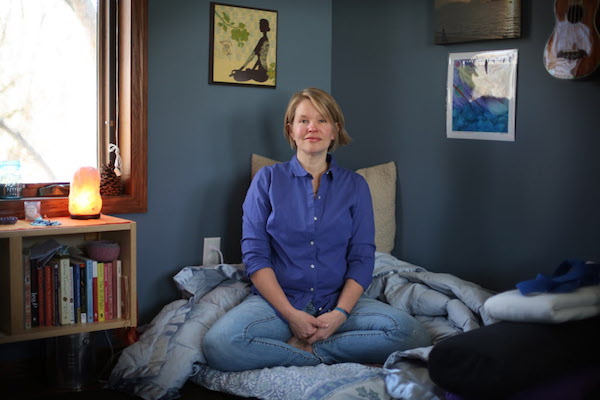By: Lola Phoenix
[T]here are many ways that death has followed me throughout my life. I was born with my umbilical cord wrapped around my throat and a disability nearly caused my death several times as an infant. When I was three and I stopped growing, my growth hormone, before it was made in a lab, was taken from cadavers.
Fearing death dominated my childhood so much that I became extremely paranoid. Growing up with a gay parent and hearing about Matthew Shepard, I had to trust the friends I brought home into my life. Already having been bullied in school for supposedly being a lesbian, I didn’t want to give them any reason to escalate the harassment physically. While I know I’m not personally going to be targeted, the spectre of death is ever present.
But so much of death is about mourning people who have died, when, for LGBTQ people especially, there is a kind of death that is not really discussed, explored or acknowledged—the death and mourning of the living. Estrangement grief is a thing, and it’s complicated to mourn a person who is not dead.
“Death positivity” is about coming face to face with mortality and, instead of fearing and ignoring it, embracing it. I came across this movement through the “Ask A Mortician” channel on YouTube run by Caitlin Doughty, who is also behind the death positivity movement Order of The Good Death. Fundamentally, death positivity is about challenging the way our society views death and creating a culture that allows people to be more prepared and ready to make the difficult choices around death that they may be avoiding.
All around the globe, people have signed up to be part of The Order of The Good Death, and this may mean something as simple as taking an active interest in making end of life wishes to educating people locally about burial options to campaigning in local government for options such as water cremation, which aren’t available in all areas.
The process of becoming death positive is about embracing the realities that lie at the end of my life, it also has helped me embrace several lessons that have helped me live my life.
I am estranged from both of my parents: one of them disowned me and the other has mental health problems that make a relationship between us difficult. Other family members either don’t show very much interest in me or, when I have attempted to reach out for support, have either not responded or told me they were tired of “weird.” As someone who has always felt quite strongly about family ties, these losses were difficult to endure. But the lessons I have learned through death positivity have made them much easier to cope with.
1. Sadness is not shameful.
This seems obvious, but it isn’t. Part of death positivity encourages people to think about what choices they want for their bodies after death. That got me thinking about the complex way I’ve felt about funerals I’ve been to—how cold and incredibly formal they’ve felt and how awkward it was to express strong emotions in austere settings. I decided I didn’t want the people I left behind to feel how I felt. I wanted them to feel like being sad was okay. And in doing so, I had to tell myself that it was okay not only for the people who lost me to mourn, but for myself to mourn the people I have lost.
Estrangement isn’t always permanent, but holding on to the hope of change in many instances can end up causing more pain than it’s worth. It may seem on the outside that your estranged relative has more of a chance of coming back into your life than a dead relative, but that isn’t true for everyone.
Giving others the space to grieve helped me understand that it was okay for me to grieve. At least now when I mourn the loss of people in my life, I can accept that I have these feelings and not fight against them.
2. Grief and recovery aren’t linear.
In thinking about how I wanted to prepare as much as possible for my loved ones before I die so that they don’t have to stumble around in the process of grief, I had to come to understand it more. Despite the presence of death and loss in my life, there have been few family members I have actually felt sadness at losing. My mother was 18 when she had me and her mother was 18 when she had her, so I have a relatively young family. I lost my grandfather and step-grandfather when I was in high school, but I knew both of these men as abusers of my mother.
When they passed, I wasn’t even remotely sad. Many of my great uncles and aunts had passed, and I lost a second cousin to a tragic accident, but I didn’t have very close relationships with these people. It was when my great grandmother died in 2013 and I didn’t have the money to fly home and attend her funeral that I came face to face with my biggest loss.
One of Caitlin’s videos talks about the reasons people fear death, and one of them is the impact it will have on their loved ones. Much of what I suspected from both Caitlin’s videos and the crowdfunders I’ve contributed to for funeral costs spelled out the reality of the impact “traditional” funeral homes and their soaring prices can have on families. I had to understand that grief is expressed in so many different ways and it’s not as simple as “letting it go.”
In the case of my great grandmother, losing her felt so odd and numb that I had almost no emotion when I heard the news that she had passed away. She was 98 years old and the morning I got the news, I’d had a funny feeling that she was gone. Without having ever experienced a massive loss, I didn’t at the time know what was normal. And I secretly felt ashamed that I hadn’t shed many tears, though I told nobody.
Years after her death, I was trying to recall how she made biscuits every Sunday morning for breakfast. My mind walked through the process of her pouring flour and lard on her biscuit pan, but there was a lot I couldn’t remember. When it occurred to me that I couldn’t ask her anymore, something broke in me and I finally cried. After being active in Death Positive communities, I knew and understood that grief wasn’t linear and that sometimes the sadness comes and goes when it wants.
Likewise, I stopped telling myself to “let it go” when I was grieving estrangement from my parents. When you experience a loss, you have good days and you have bad days. Thinking about my own death and preparing for it meant thinking about what my loved ones would go through in their grief. I would never expect them to just stop feeling their feelings, so why should I expect my feelings to suddenly go away?
3. Celebrate the time you have.
The Order of the Good Death may sound very morbid and odd to some. But in her videos, Doughty points out that “the good death” is not about failure if you don’t plan, but about the idea that avoiding conversations about death ultimately means much more hardship than addressing it at all.
Facing my own mortality in a healthy way encourages me to actually take advantage of the time I have. When death becomes something that moves from being in the unknown, terrifying and looming but never addressed to being looked at, planned for, and understood, that also means that you’re more likely to take advantage of life.
Loss and grief become part of the process of death and equally part of the process of life. When I learned to address the fact that all life will end including my own, it felt easier to for me to cope with the idea that several of the relationships I once valued and held dear in my life were also at an end—and that’s okay. And what’s more, it’s helped me appreciate what time I do have and know not to waste it on people who hurt me or don’t respect me for who I am.
Death positivity may sound like a bizarre notion, especially as a queer person and a disabled person fighting in many instances to stay alive. It’s not about wanting to be dead. It’s not about being happy about dying. But it’s about facing the reality of death in a way that isn’t the paranoia and fear I’ve had sit heavy on my shoulders.
And doing so has helped me cope with what a lot of other people like me go through when we lose a family member either because of our own identities or because of their inability to accept and see us for who we are in a loving and positive way. Reckoning with the face of grief and mourning has given me tools to use to cope with a different but also painful kind of loss.
Because I embrace the fact that I will die, I live better.
Complete Article ↪HERE↩!



